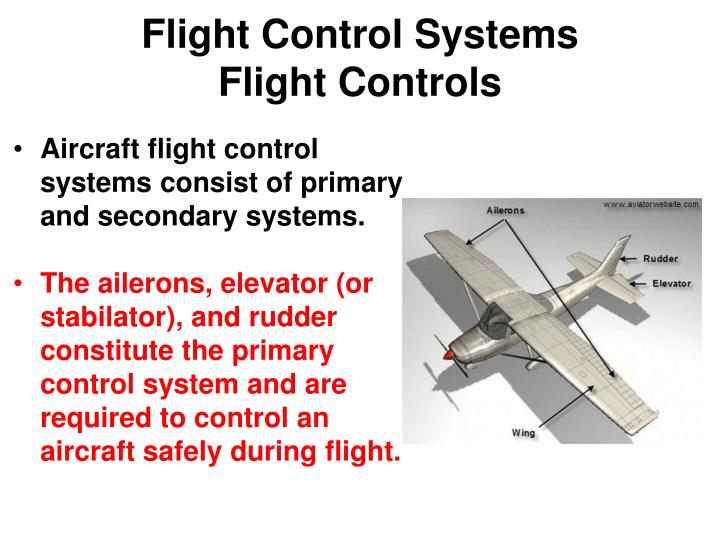


Artificial control loading (tactile feedback) is provided to the control wheels and rudder pedals. The primary flight surfaces are actuated by Power Control Units (PCUs) that are hydraulically powered and mechanically controlled. The system splits logically into pitch–yaw (tailplane and rudder) and roll (aileron) control runs respectively. The most basic flight control system designs are mechanical and date back to early aircraft. The primary flight controls co nsist of two separa te elevators and ai lerons, and a single rudder. Figure 3 shows a simplified three dimensional schematic of the Hawk 200 flight control and levers -which is indicated in red circles- used in the control system. Thus the probability of loss of the primary ight control system is 9.5 × 1011 per ight hour. Push-pull rods get their name from the way they transmit force. In the push-pull control rod system, metal push-pull rods are used as a substitute for the cables. Movement of the cockpit controls transfers force through the cable to the bell crank, which moves the control surface. The bell crank is connected to the control surface. When these are deflected in flight the aeroplane moves about one or more of its three axes. In the cable and pulley system, cables are connected from the control in the cockpit to a bell crank or sector. Primary flight controls are the elevator, ailerons and rudder. These are push-pull control rod systems and cable and pulley systems. There are presently two main methods of connecting the pilot’s controls to the rest of the flight control system. II- Primary Flight Control System (PFCS), or Manual.

Wing flaps, leading edge devices, spoilers, and trim systems constitute the secondary control system and improve the performance characteristics of the airplane or relieve the pilot of excessive control forces. Other more sophisticated flight control systems may use electrical or hydraulic power to provide. Primary flight control surface and primary flight control pilot input: pitch axis, roll axis, yaw axis. Aircraft flight control systems consist of primary and secondary systems. A simple flight control system may be all mechanical that is, operated entirely through mechanical linkage and cable from the control stick to the control surface.


 0 kommentar(er)
0 kommentar(er)
